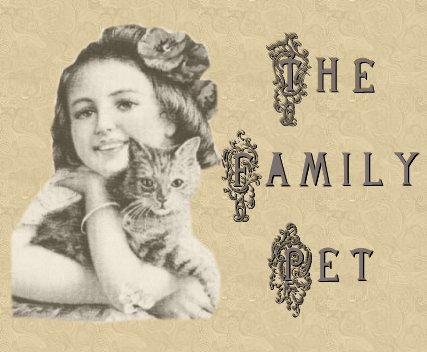

During the final quarter of the 19th century, the status of animals, namely pets, changed somewhat. There was a growing influence of freethinkers, giving rise to a new fraternity between man and beast. People began to see animals as individuals, worthy of sentiment and affection.
For women, this new view accorded well with ideas about feminine sensibilities. Fond looks, lingering caresses, and rowdy games not only indicated the bond between a woman and her dog, they attested to a woman’s inclination toward tenderness and pity. These acts of playfulness and compassion were messages directly addressed to men. Animals were thus assigned a new domestic function…the conveyance of emotion.
Affection for animals becomes even more apparent after 1860. People became obsessed with pedigrees and grooming. Dog shows came into vogue. Photographs of the family pet begin to appear in family albums alongside those of the children. Pet cemeteries initiated a new form of veneration of the dead. Even the railroad companies joined in the frenzy, adding special cars for pets to their passenger lines.
Cats, whose primary function heretofore had been as controllers of rats and mice, became pets of the common people. The spread of evolutionary theories, such as Darwin’s, the extensions of veterinary medicine, and the success of animal husbandry all contributed to this new animal-human fraternity.
By the turn of the century, men depended on animals, at least in an emotional sense, far more than animals depended on man. Animals were on the verge of becoming the kings of the domestic arena.

Disclaimer: Granny's Closet provides the information contained in this website for information and entertainment purposes only and neither endorses or takes responsibility for the use of any of the information found herein.
Graphic design and the contents of "Granny's Closet" © 2002-2003. Updated March 4, 2003